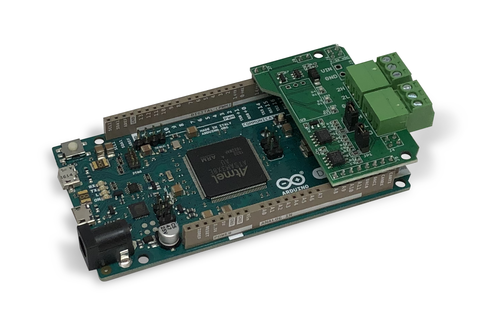Blog
Recent Posts
RobotDyn - Data Logger Shield For Arduino - Development Resources
Posted by on
 To mention it upfront, we don't sell the data logger shield for the Arduino. As a matter of fact, I bought this board out of pure curiosity, because it fits and complements our Arduino-Based ECU Development Board With Dual CAN Bus Interface. This combination bares the potential for creating a low-price CAN Bus data logger.
To mention it upfront, we don't sell the data logger shield for the Arduino. As a matter of fact, I bought this board out of pure curiosity, because it fits and complements our Arduino-Based ECU Development Board With Dual CAN Bus Interface. This combination bares the potential for creating a low-price CAN Bus data logger.
I was also surprised by the pricing, a mere US$6.99 on Amazon, or under three dollars through the manufacturer's website (shipping not included). After I received the board, I immediately left an unfavorable customer review on Amazon, because the board came without any documentation and without any programming support. Considering the low price, that should not be a surprise, but it also matches my experience with electronic products developed in China.
The hardware is usually in good quality and is dirt-cheap, but they don't invest a lot of time with professional documentation and software support (which would result in higher pricing). They usually refer to github or other resources, and that is also the case here.
I took the time for some Internet research and posted it below, but I have not engaged into any development activities at this time. As I wrote, I was curious, and the RobotDyn shield is a low-price alternative for strict lab/office use.
SD Card Interface
The SD card interface works with FAT16 or FAT32 formatted cards, meaning it allows saving data to files on any FAT16 or FAT32 formatted SD card.
The board uses a CD4050 chip for voltage conversion. All official Arduinos run on 5 VDC, which for a long time was the 'standard' voltage for hobbyist electronics and microcontrollers. But now new sensors, displays and chips are 3.3 VDC and thus are not 5 VDC compatible. For example, XBee radios, and SD cards and accelerometers all run on 3.3 VDC logic and power. If you tried to connect to them with 5 VDC, you could damage the internals of the accessory.
Real-Time Clock
The real-time clock (RTC) keeps the time, in combination with the onboard battery, going even when the Arduino is unplugged. The RTC uses the DS3107 chip. For more information and programming samples, see the references below.
More Information
Development Resources
- RobotDyn - Data Logger/Logging Shield - Schematics (PDF)...
- RobotDyn - Data Logger/Logging Shield - Dimensions (PDF)...
- DS3107 Real-Time Clock...
- Arduino Real Time Clock Tutorial using DS1307...
- Real Time Clock Library for Arduino...
- How to install an Arduino library...
- CD4049UB and CD4050B CMOS Hex Inverting Buffer and Converter Manual...
- Guide to SD Card Module with Arduino...
- SD Card Module w/ Arduino: How to Read/Write Data...
Arduino-Based ECU Development Board With Dual CAN Bus Interface
Leverage the power of an ARM Cortex M3 32-bit processing capability in combination with a dual CAN Bus interface to create your next CAN Bus or SAE J1939 application or prototype. By combining our dual CAN port interface, the Arduino DUE microcontroller, an OBD2 or SAE J1939 cable, and open-source software libraries you are ready to go with powerful a turn-key Arduino-based dual CAN bus solution.
Use the vast resources of Arduino software (sketches) and hardware components (shields) to create your CAN Bus, OBD2, or SAE J1939 application.
 Loading... Please wait...
Loading... Please wait...

